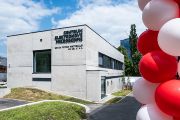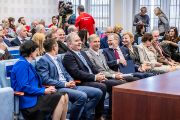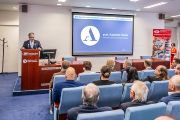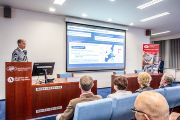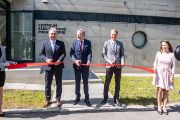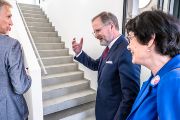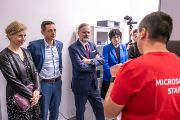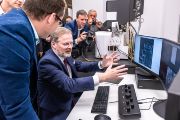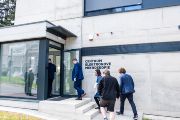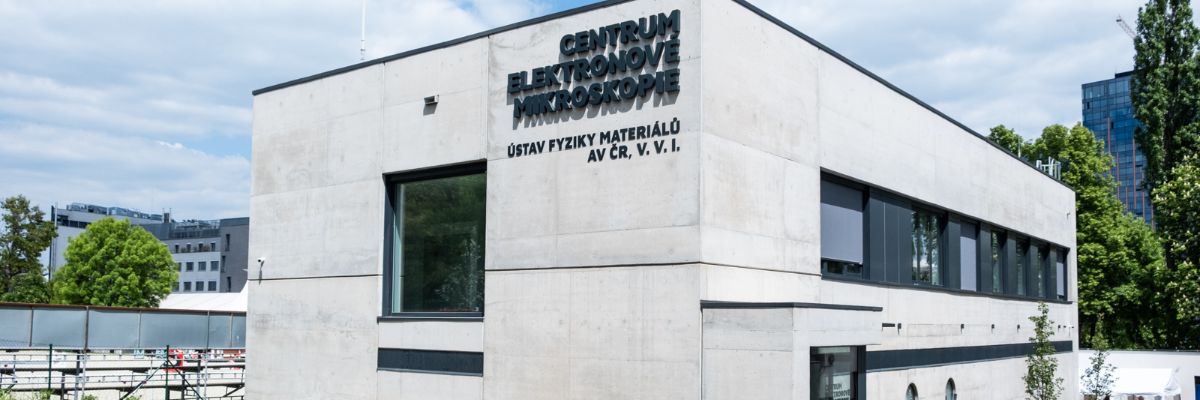
New Center for Electron Microscopy in Brno opens its doors to global science
13. 05. 2025
One third of the world’s production of electron microscopes comes from Brno, Czech Republic. It’s no coincidence – the city’s history in the field dates back to the 1950s, when the renowned physicist Armin Delong helped lay its foundations. The tradition continues to thrive, as evidenced by the new Center for Electron Microscopy, officially opened on 12 May 2025 by the Institute of Physics of Materials of the Czech Academy of Sciences (CAS).
The inauguration of the new building, home to state-of-the-art laboratories, was attended by several distinguished guests from academia, the public sector, and industry – including the Prime Minister of the Czech Republic, Petr Fiala. The Prime Minister, himself a native of Brno, noted that he was particularly pleased that the center had been built in his hometown. He also highlighted the crucial involvement of three major local companies specializing in electron microscopy, working closely with scientific institutions and universities. “South Moravia is a scientifically important region – though we often don’t fully realize this and take enough pride in it,” Petr Fiala said.
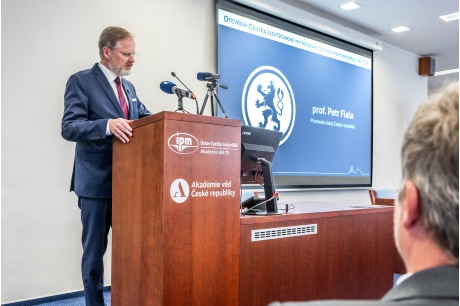
According to Czech Prime Minister Petr Fiala, the South Moravian Region of the Czech Republic plays a vital role in science and research.
A world-class endeavor
In his speech, the President of the CAS, Radomír Pánek, underscored the prominent international standing of Czech electron microscopy and praised the successful involvement of the Institute of Physics of Materials and the Institute of Scientific Instruments of the CAS – widely recognized as the driving force behind the reputation of Czech electron microscopy – in global science and research.
He described the opening of the center as a major contribution to the advancement of Czech science, the national economy, and the training of a new generation of researchers. “The scientists at these institutes are not only engaged in basic research – they are also working with companies to transfer scientific knowledge into real-world applications, and of course, with universities,” Pánek said. He added that thanks to its open-access model, the new center will also serve students in master’s and doctoral programs and help expand academic cooperation across the region.
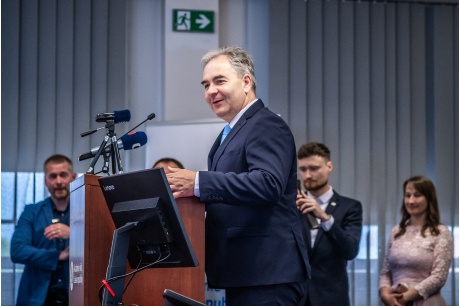
President of the CAS Radomír Pánek highlighted the importance of partnerships with universities and industry alike.
A building with unique capabilities
The Center for Electron Microscopy is located on the premises of the Institute of Physics of Materials of the CAS in Brno. Construction took place between 2022 and 2024 and was even completed ahead of schedule. The facility, which currently houses five electron microscopes, is already fully operational.
To ensure the flawless functioning of this cutting-edge equipment, the building had to meet a set of demanding technological criteria. The center includes five specialized rooms designed and built to accommodate the stringent operational needs of two transmission and three scanning electron microscopes.
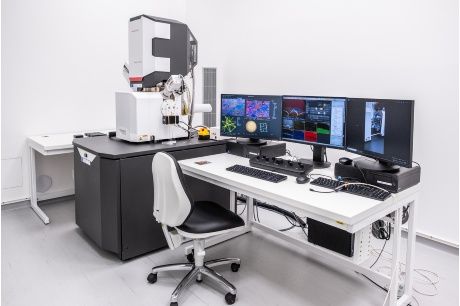
The equipment now housed in the new center includes a TF Apreo EDS scanning electron microscope, manufactured in Brno by Thermo Fisher Scientific.
The facility also holds new labs for sample preparation and support spaces for the research team. The modern building provides a stable environment essential for highly sensitive measurements and is designed to minimize vibrations, electromagnetic interference, and temperature fluctuations.
The Czech Academy of Sciences funded the construction of this top-tier research facility for studying the microstructure of materials and developing advanced technologies. The total construction cost exceeded CZK 110 million (circa EUR 4.4 million). The value of the equipment is approximately CZK 150 million (circa EUR 6 million) – nearly half of which was covered by the Czech Ministry of Education, Youth and Sports. Tomáš Kruml, Director of the Institute of Physics of Materials of the CAS, thanked all parties involved and presented the institute’s activities, focusing in particular on research and development in materials science.
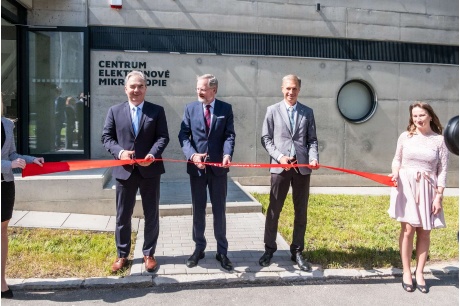
The ribbon-cutting ceremony in front of the new Center for Electron Microscopy. From left: President of the CAS Radomír Pánek, Prime Minister of the Czech Republic Petr Fiala, and Director of the Institute of Physics of Materials of the CAS Tomáš Kruml.
Written and prepared by: Markéta Wernerová, External Relations Division, CAO of the CAS, drawing on the CAS press release
Translated by: Tereza Novická, External Relations Division, CAO of the CAS
Photo: Vojtěch Cimpl for the CAS
 The text and photos are released for use under the Creative Commons license.
The text and photos are released for use under the Creative Commons license.
Read also
- A little-known chapter of history: Czechoslovaks who fought in the Wehrmacht
- Twenty years of EURAXESS: Supporting researchers in motion
- Researching scent: Cleopatra’s legacy, Egyptian rituals, and ancient heritage
- The secret of termites: Long-lived social insects that live in advanced colonies
- Two ERC Synergy Grants awarded to the Czech Academy of Sciences
- Nine CAS researchers received the 2025 Praemium Academiae and Lumina Quaeruntur
- Step inside the world of research: Week of the Czech Academy of Sciences 2025
- A / Magazine: Bugs, the rusting human body, and beauties from the kingdom of ice
- PHOTO STORY: The invasive black bullhead catfish threatens Czech fishponds
- Rewrite the textbooks – we’ve found a bone; aka When science takes a wild turn
The Czech Academy of Sciences (the CAS)
The mission of the CAS
The primary mission of the CAS is to conduct research in a broad spectrum of natural, technical and social sciences as well as humanities. This research aims to advance progress of scientific knowledge at the international level, considering, however, the specific needs of the Czech society and the national culture.
President of the CAS
Prof. Eva Zažímalová has started her second term of office in May 2021. She is a respected scientist, and a Professor of Plant Anatomy and Physiology.
She is also a part of GCSA of the EU.
